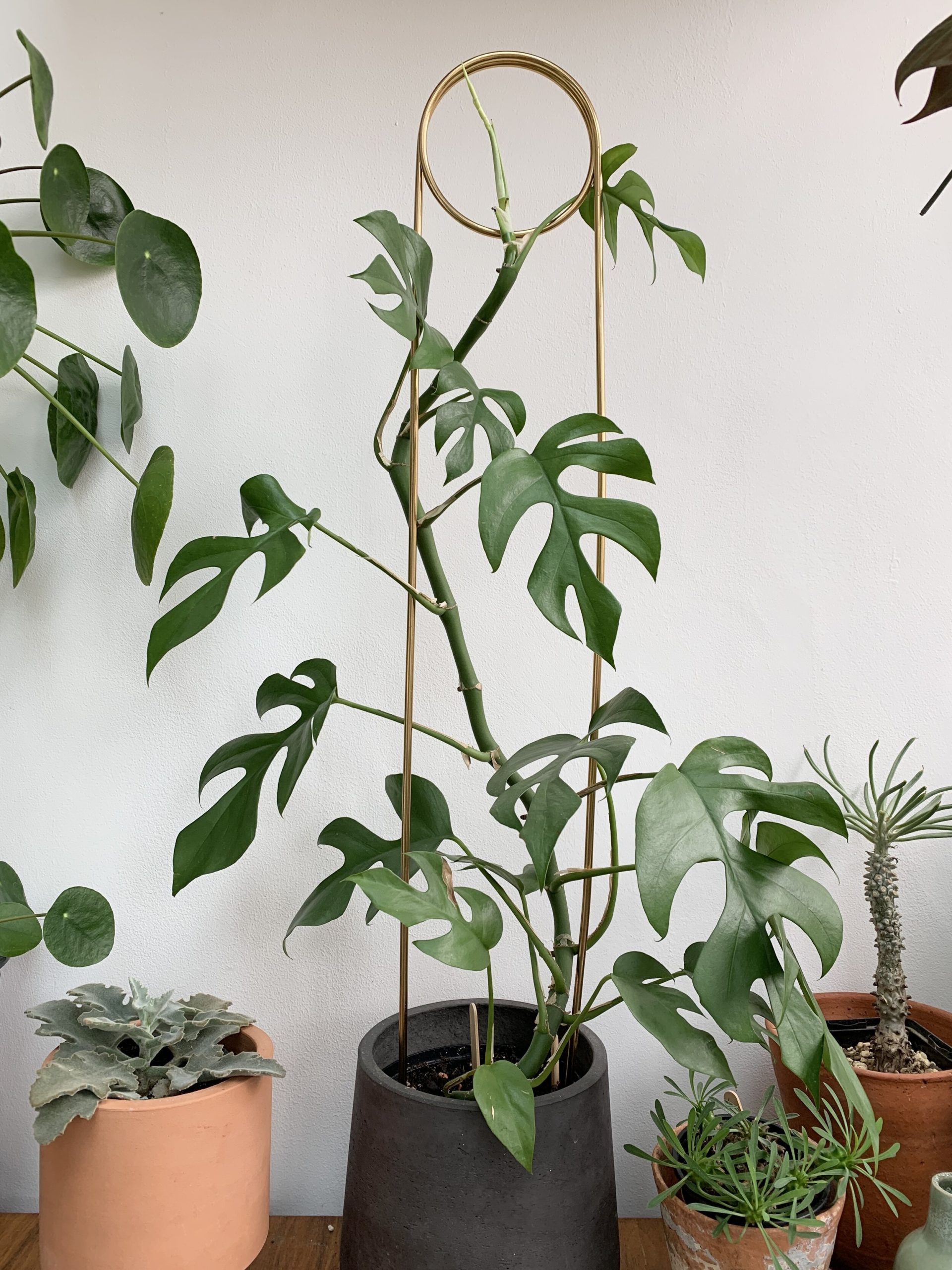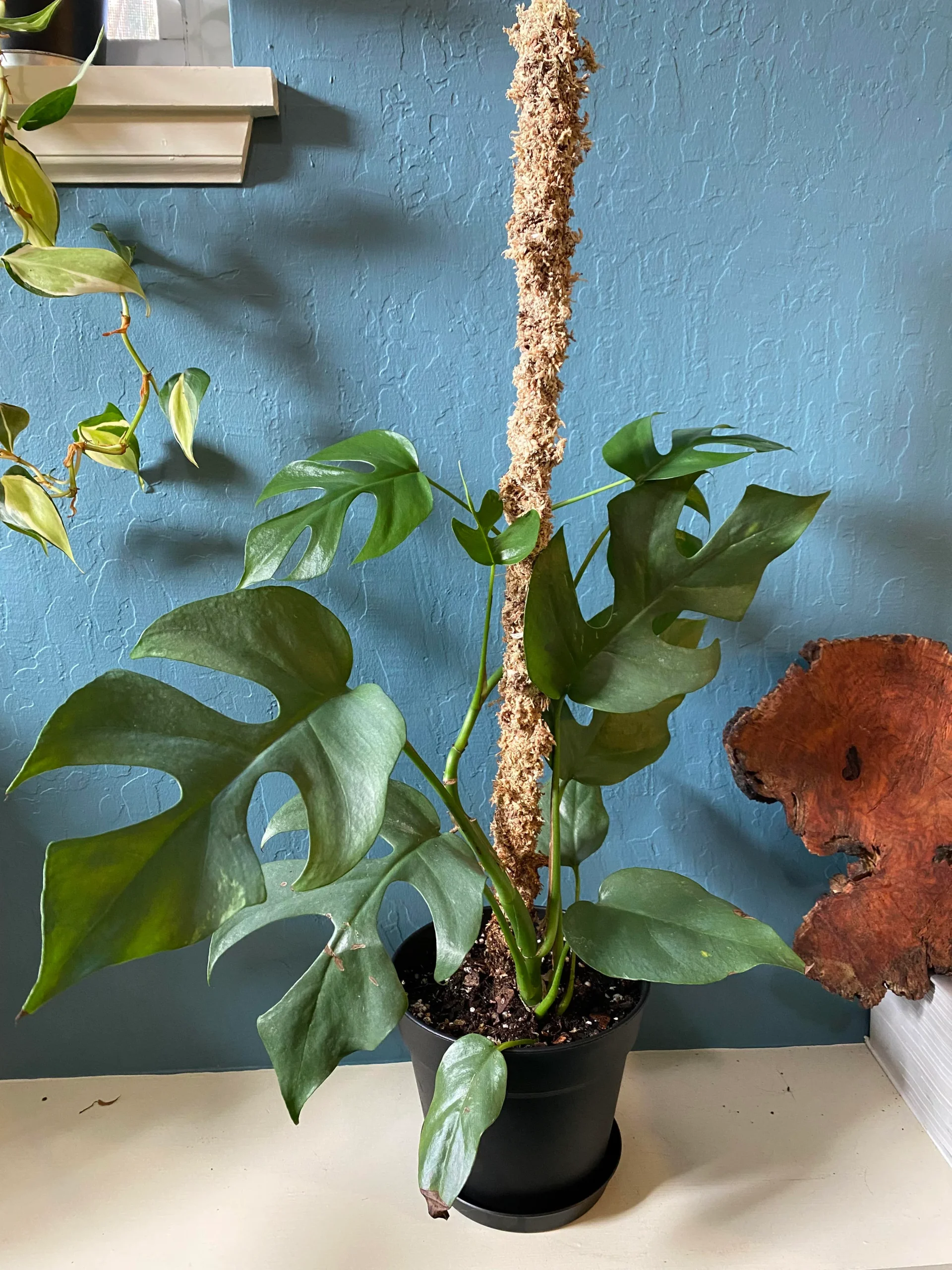Rhaphidophora tetrasperma, also known as Mini Monstera or Philodendron Ginny, is a tropical indoor plant gaining popularity for its split leaves that resemble those of the iconic Monstera deliciosa. Though they look alike, Rhaphidophora tetrasperma stays much smaller, maxing out around 3 feet, making it an ideal choice for containers and tabletops.
Caring for this “little monster” houseplant is relatively straightforward if you follow some basic guidelines regarding sunlight, water, humidity, soil, fertilizer, pruning, and troubleshooting problems. By understanding its needs and establishing the right conditions, you’ll have a happy, healthy Rhaphidophora tetrasperma that delights for years to come.

Choose the Right Light for Your Mini Monstera
Rhaphidophora tetrasperma thrives in bright, indirect light, with some tolerance for lower light. Insufficient light leads to small, spaced out leaves, while direct sun scorches the foliage. Place your plant near an east, west, or lightly shaded south window.
Finding the Light Sweet Spot
- East or west-facing windows provide gentle, consistent light that tends to be ideal
- Lightly shaded south windows work if you diffuse the direct sun
- North facing windows may be too dark, use sheer curtains to disperse more light
- Supplement with a grow light if indoor conditions are too dim
Signs of Light Problems
- Sparse, small leaves indicate too little light
- Yellowing leaves may signal too much direct sun
- New growth means your light conditions are right
“For more detailed insights on optimal lighting conditions, you might want to explore how to grow Rhaphidophora in easy steps, which covers various aspects of caring for these tropical plants.”
Water Your Rhaphidophora Tetrasperma Properly
As a tropical plant, Rhaphidophora tetrasperma likes a steady moisture supply but dislikes soggy soil or standing water. Water when the top inch or two of soil is dry, allowing the pot to drain fully. The soil beneath should remain lightly moist but not muddy.
Setting Up a Watering Schedule
- During the growing season, water about once a week
- In winter when growth slows, water every 10-14 days
- Stick your finger in the soil to gauge moisture before watering
- If the pot feels light, it’s time to water
- Always empty any water in the saucer after 30 minutes
Identifying Under or Overwatering
- Drooping leaves, brown crispy edges indicate under-watering
- Yellow leaves, soft stems, root rot mean overwatering
“To avoid the common issue of overwatering or underwatering, check out our guide on 5 common reasons why your Rhaphidophora leaves are turning yellow, offering practical tips for maintaining the perfect moisture balance.”

“Discover the beauty of Rhaphidophora Tetrasperma today! Elevate your indoor garden with this stunning and easy-to-care-for plant. Don’t miss out on the chance to bring a touch of nature into your home. Shop now and add a splash of green to your life!”
Boost Humidity for Your Mini Monstera
Native to Asian rainforests, Rhaphidophora tetrasperma enjoys consistent humidity around 60%. In dry indoor air, brown crispy leaf edges develop. Group plants together, use pebble trays, or run a humidifier to increase moisture.
Easy Ways to Add Moisture
- Place pots on pebble trays filled with water
- Group plants to create a self-contained humid zone
- Use room humidifiers to moisten the surrounding air
Effects of Low Humidity
- Dry, crispy brown edges form on leaves
- Dust and pests become more problematic
- New leaves may unfurl slowly or remain furled
Use a Well-Draining Potting Mix
Rhaphidophora tetrasperma grows best in loose, airy potting soil that retains some moisture but also drains well. Pre-mixed tropical or indoor plant soil blends work perfectly. Or make your own mix of peat moss, perlite and bark.
Creating the Right Soil Environment
- Aim for a mix that retains moisture but also drains easily
- Start with a quality potting mix for indoor tropical plants if possible
- Mixing your own blend, use peat moss, perlite, bark in equal ratios
- Re-pot every couple years replacing tired old soil
Consequences of Poor Draining Soil
- Soggy soil leads to root rot and declines plant health
- Compact soil prevents roots from spreading to search for moisture and nutrients
“Selecting the right soil is crucial for the health of your Rhaphidophora Tetrasperma. Learn more about the best soil types in our guide, 5 best soil types to grow Rhaphidophora at home.”

Fertilize Occasionally for Added Growth
While not essential, applying fertilizer every month or so during the active growing season can boost Rhaphidophora tetrasperma’s development. Use a balanced liquid fertilizer diluted to half strength. Flush the soil monthly to prevent salt buildup.
Tips for Fertilizing Your Plant
- Apply fertilizer monthly spring through summer when actively growing
- Use a balanced liquid houseplant fertilizer diluted to 1⁄2 strength
- Flush soil every 4 weeks to prevent salt buildup
- Cease fertilizing over winter when plant is dormant
Trouble Signs Related to Fertilizer Issues
- Tip burn on leaves can mean excess fertilizer salts accumulating
- Slow growth and small leaves may indicate need for more fertilizer
Prune and Troubleshoot Problems with Your Mini Monstera
Trimming off dead leaves and wayward stems keeps your Rhaphidophora tetrasperma tidy and healthy. Other issues like pests and diseases should be addressed promptly. Catch problems early, isolate affected plants, and use gentle, organic treatments whenever possible.
Handling Basic Care and Maintenance
- Prune off dead or damaged leaves and stems at the base
- Use sterilized pruning shears to prevent spreading issues
- Move plant away from direct air flow to avoid leaf burn
Dealing With Pests, Diseases, and Other Issues
- Inspect regularly for common pests like spider mites or mealybugs
- Isolate and treat diseased plants to avoid infecting others
- Stake and tie up climbing stems for support if needed
- Slow down watering and fertilizer if salt buildup is causing leaf burn
Conclusion
With its alluring split leaves on climbing stems, Rhaphidophora tetrasperma makes a charming, manageable houseplant for most homes. Provide this “Mini Monstera” with indirect sunlight, regular water, humidity around 60%, tropical potting mix, occasional fertilizer, and pruning as needed. Avoid overwatering and direct sun to prevent problems. Taking a little time upfront to give your plant what it prefers will reward you with a lush, verdant Rhaphidophora tetrasperma that delights for years as a uniquely easy-care indoor vine.
FAQ
1. What is Rhaphidophora Tetrasperma?
- Rhaphidophora Tetrasperma, also known as Mini Monstera or Ginny Philodendron, is a popular tropical houseplant known for its unique split leaves and compact size. It is not a true monstera but is often confused with one due to its similar appearance.
2. How do I care for Rhaphidophora Tetrasperma?
- Rhaphidophora Tetrasperma thrives in bright, indirect light and well-draining soil. Water it when the top inch of soil feels dry, and provide it with moderate humidity. Regularly misting the plant or using a humidity tray can be beneficial.
3. Can I propagate Rhaphidophora Tetrasperma?
- Yes, you can propagate Rhaphidophora Tetrasperma through stem cuttings. Simply cut a healthy stem just below a leaf node and place it in water or soil. Roots should develop, and a new plant will grow from the cutting.
4. Is Rhaphidophora Tetrasperma toxic to pets or humans?
- Rhaphidophora Tetrasperma is considered toxic if ingested, and its sap can cause skin irritation. It is advisable to keep it out of reach of pets and children and wash your hands after handling the plant.
5. How fast does Rhaphidophora Tetrasperma grow?
- Rhaphidophora Tetrasperma is known for its relatively fast growth, especially in optimal conditions. It can produce new leaves and vines throughout the growing season, which is typically spring and summer. However, growth rate can vary based on factors like light, humidity, and temperature.

